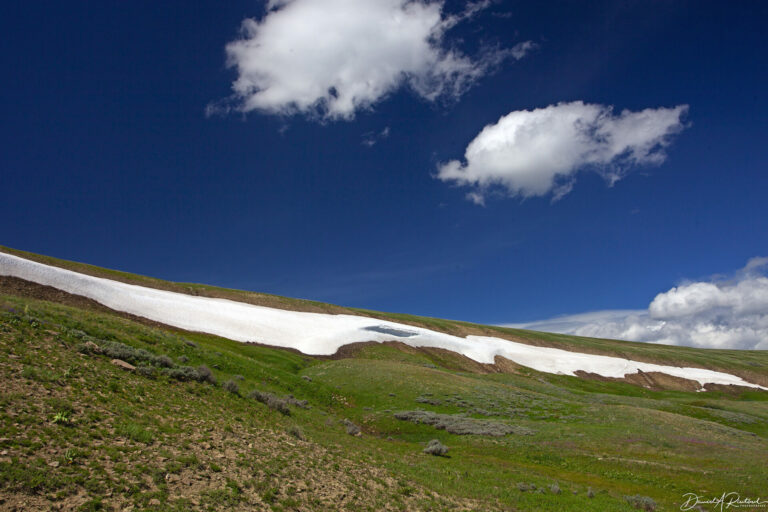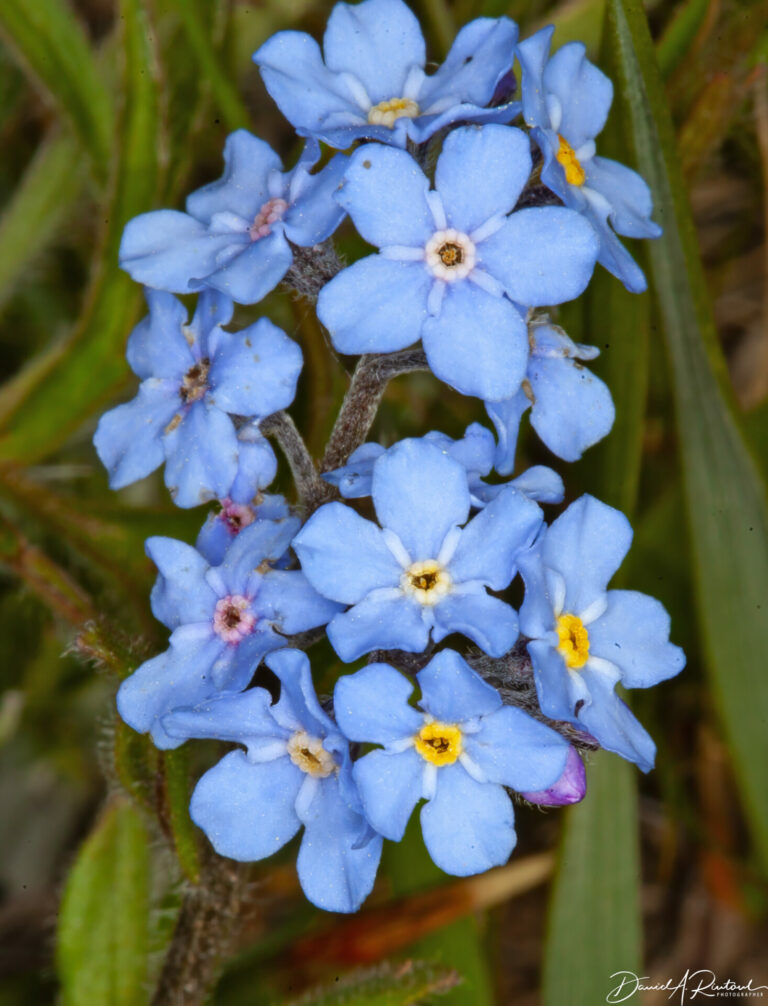On the Road is a weekday feature spotlighting reader photo submissions.
From the exotic to the familiar, whether you’re traveling or in your own backyard, we would love to see the world through your eyes.
It’s Albatrossity Monday, and then it looks like we have some great trips ahead of us this week.
(click to see a bigger, non-blurry version)
Albatrossity
Eight years after our trip to see the solstice sunrise at the Bighorn Medicine Wheel, we found ourselves there again, and again at the time of the solstice. Elizabeth was heading to a literary conference in Moscow Idaho, and a drive across some blue highways was a getaway for me. So here are some more pics from the high Bighorn Mountains at the beginning of alpine summer there, to be followed by more pics as we headed west toward Idaho.

Once again the snowfields were still prominent, although they were receding. Click here for larger image.

And the local mammals were out foraging in the short summer season. This Yellow-bellied Marmot (Marmota flaviventris) was hanging out at the parking lot at the Medicine Wheel trailhead, perhaps hoping for a handout. I actually have several research publications dealing with hibernation metabolism in this critter, and I am always glad to see one. Click here for larger image.

Another mammalian presence was this Least Chipmunk (Neotamias minimus). A good friend from graduate school worked on these and other related critters for his doctoral dissertation, and his work (e.g. Chappell, M. 1978. Behavioral factors in the altitudinal zonation of chipmunks (Eutamias). Ecology, 59/3: 565-579) is now classical enough to have found its way into introductory biology textbooks. That is pretty rare for grad dissertation research! At the time they were known as Eutamias minimus. Probably by the time you read this, the taxonomists will have changed the name again. Click here for larger image.

We only saw a few birds in the alpine zone, but one of them, this male Mountain Bluebird (Sialia currucoides) was cooperative and posed for many pictures. The bluest of the bluebirds, with nary a hint of the rusty plumage found in Eastern or Western Bluebirds, their “quadruple-extract-of-azure garb” reflects the high cerulean mountain skies perfectly. Click here for larger image.

The female Mountain Bluebird has only a hint of the male’s colors, but is a charmer nonetheless. Click here for larger image.

I also found some flowers that I had not seen (or at least not photographed) on the prior trip. This is Purple Locoweed (Oxytropis lambertii), a spectacular flower despite its toxicity. Click here for larger image.

Another spectacular flower with an unfortunate name, this is Fern-leaf Lousewort (Pedicularis cystopteridifolia). I suspect that the indigenous people of this area probably had a more graceful name for this one. This is another plant that was first described by Meriwether Lewis, and is endemic to northwest Wyoming and southwest Montana. Click here for larger image.

The American Pasqueflowers (Pulsatilla patens) were blooming abundantly here, even though it was not really that close to the Easter Season. Click here for larger image.

Woodland Forget-Me-Not (Myosotis sylvatica) is an introduced species, originally from Europe, but now found widely across the USA. There is a native Forget-Me-Not (Myosotis asiatica, aka Alpine Forget-Me-Not) in this part of the continent, which has small very bright blue flowers. Bur we did not find it. Click here for larger image.

But even introduced plants can make pollinators happy. This Milbert’s Tortoiseshell (Aglais milberti) was finding something good to eat in those Forget-Me-Not flowers. Click here for larger image.


AlaskaReader
Receding snowfields sounds nice, …
Swiftfox
Both western species of bluebird always floored me when I saw them during my travels there. Dippers were my favorite. Wish there was an analogous species here in the east.
SteveinPHX
Sure look forward to these photographs on a Monday morning! Thank you!
HinTN
That first green, snow field, sky really made my morning. All the rest was gravy, but most excellent gravy. Thanks, Albatrossity
Betty
Just all lovely pictures. Good introduction for the week.
delphinium
Great photos as always-thanks for sharing!
Mike S. (Now with a Democratic Congressperson!)
Great bird pics and my fave alpine flowers with a butterfly too!
Although I thing the forget-me-not in the last picture might be Eritrichium nanum, the alpine forget-me-not.
Albatrossity
@Mike S. (Now with a Democratic Congressperson!): Yeah, I didn’t key out the flowers while I was there, so I have to do it from pictures. The Alpine Forget-me-not seems to have darker blue flowers than those in my picture, but colors are not always the best key. It certainly was in the right habitat for the Alpine version/
StringOnAStick
So lovely! Western bluebird males are so striking, you always get excited to see one.
I was in the Big Island last week and visited the botanical gardens near Hilo; spectacular! I saw several monarch butterflies and asked an employee if these stay in Hawaii or if they migrate to Mexico; she said they stay in Hawaii. The botanical gardens we’re built in the 1970’s by a couple who fell in love with the area and retired there. They took a steep ravine filled with wrecked cars and trash, cleaned it up using no heavy equipment to avoid damaging the forest soils. Very impressive.
frosty
Love the flowers! When we started on our 2020 retirement Road Trip my goal was to see a superbloom somewhere. By the time we left Arizona (never got to California because of COVID shutdown) I’d seen Bullock’s Orioles and Violet-Green Swallows at our campsites and my obsession switched over to birds.
I saw some interesting flowers and took pictures. Might be good for a Garden Chat if AL runs out of other posts.
Mike S. (Now with a Democratic Congressperson!)
@Albatrossity: Yes, as you say the shade of blue isn’t to significant, but the very short flowerr stems and hairy leaves point to Eriotrichum nanum. the alpine forget-me-not.
BigJimSlade
What great bluebirds! And a marmot with unheralded lichen :-)
Citizen Dave
Great as always! I suppose all animals’ head shapes evolved for reasons, but I always love looking at the marmot’s head shape. Seems so suited for their habitat. I’m guessing–not sure what they get up to, other than reading some stuff at RCNP and realizing how stiff the winds are there. Staying low to the ground seems like great adaptation.